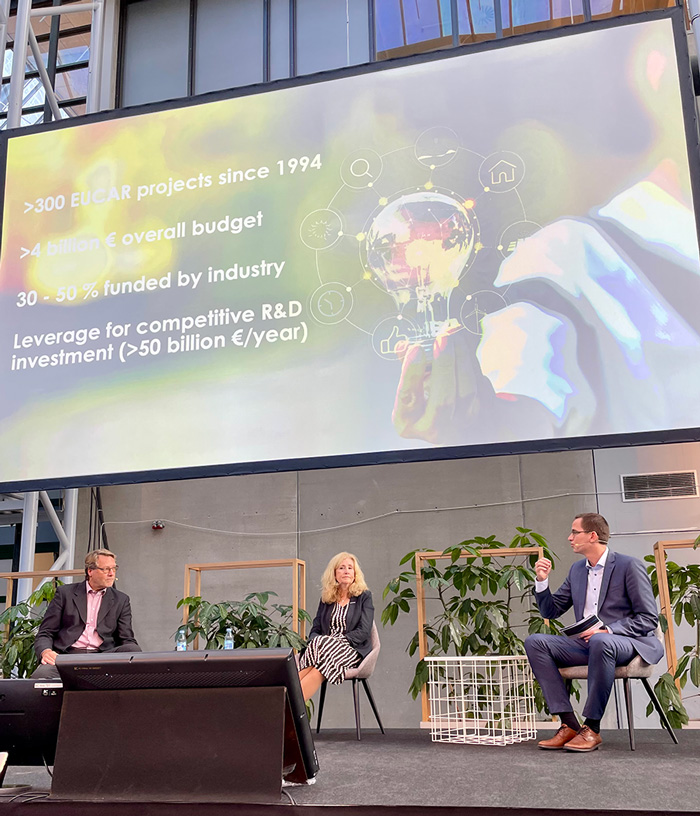A leading expert on autonomous driving at BMW and as chairman of the European partnership CCAM. We wanted to hear Armin Gräter’s take on software development in automotive and the importance of agile approaches.
Armin Gräter is deeply involved in European collaborations related to connected and automated mobility in various roles. With his background starting as a safety engineer in automotive in 1987 at BMW and now working on a European level with autonomous driving, we wanted to hear his view on how software development has been and what future he foresees for software in automotive.
Public-funded research projects play a crucial role because they allow sharing of knowledge that leads to standardization. CCAM (European Commission Partnership on Cooperative Connected and Automated Mobility) is critical in understanding the framework of new mobility schemes and driving functions, including autonomous levels 1-5. CCAM is the overall collaboration platform now, including all forms of connectivity and the safety functions it can bring to mobility.
The ambition of CCAM is to achieve a balance between infrastructure and vehicle data – i.e. combining data from authorities (traffic lights, variable traffic signs etc.) and the vehicles into a modern system that also includes high-definition maps, with layers for e.g. traffic congestion and weather information. To be successful, this combination of data needs to be in the vehicle in real-time and simultaneously the vehicle can feed back information to the infrastructure. Other parts of the world go about this differently, but we are well on our way in Europe to realizing this.
It was really a different world. I did my engineering thesis on a first generation personal computer from Victor, Microsoft didn´t yet exist. BMW was selling less than half a million cars per year, mainly in Europe. Vehicle safety was focused on developing standardized dummies for crash testing and physical matters including better belts and force limiters. Airbags were the first example for us where safety efficiently was achieved using software. What we needed from the microchips then to deploy the airbags responding in real time was at the limit of what was possible, today we would call it “edge computing”. Since then a lot has happened, including the development of AUTOSAR, which has been a key factor for standardizing safety. Now the industry development has other needs with billions of lines of code in vehicles. Looking at my first experiences with IT systems and seeing how much more sophisticated things are now – safety is nearly all about software today.

Armin Gräter on stage (left) with Helene Nicklasson, VP Innovation Ecosystems and Partnerships at Volvo Group and Stefan Deix, Director of EUCAR — on stage together discussing Automotive Innovation at The International Mobility Summit by Electronomous in October 2022 in Copenhagen.
Yes, I can see the point – for BMW, it was now four years ago when we started the autonomous driving campus in Munich. Out of the 2000 engineers there, 1000 of them were introduced to large-scale scrum and agile software development. We go in the direction of what is expected, but for now, this methodology is only applied to driver assistance systems and autonomous driving but to be expanded. I’d like to say one thing though in all this – Software in cars is about safety. We take this very seriously, and vehicle safety has to have a tighter framework than other industries, so freedom must be more limited. Another strategic thinking is that in the past, supply chains were quite hierarchical – OEMs, tier 1, and so on with the sub-suppliers. In the future we will see new schemes and more co-operations, also between competitors. I see that political initiatives must give possibilities to cooperate with different sectors. With new toolings coming on the market, like RemotiveLabs, I can see that type of collaboration opportunities realized more easily or possibly supporting smaller innovation teams in experimenting more rapidly.
There are many challenges and reasons to develop. For example, I think automotive manufacturers have to decide a few things – is the future cars something that is sold and then run for 15 years or is it a platform with strong agile development operations where we support the customers’ needs during the lifetime of the car with services and functionalities around the car? AUTOSAR and common standards must be updated with new operating systems and more modern development processes. BMW is going fast forward, and last month we reached out to 20 million cars with software updates. That is the largest volume of remote software updates from a car manufacturer to date.
When it comes to automotive, half the population in Europe will continue to live in the countryside where public transportation is not realistic, so I would say the dogma that the car is not needed in the future is black-and-white thinking. The CCAM partnership has the ability to achieve a good solution because we have successfully recruited members representing all sectors, including suppliers and infrastructure authorities. The car industry will probably not grow as much anymore but rather find new solutions and also merge more with public transports.
About
Armin Gräter has been working for BMW since 1987 in various roles, such as Safety Manager of the BMW Hydrogen7 and MINI e and Functional Safety Coordinator. Current roles include:
– Director of Digitalisation and Automated Driving for BMW Group in Brussels
– Chairman of the Board of the European Public/Private Partnership on Cooperative Connected and Automated Mobility (CCAM)
– Co-chair of the ERTRAC (European Road Transport Research Advisory Council) Working Group on Connected Automated Driving.